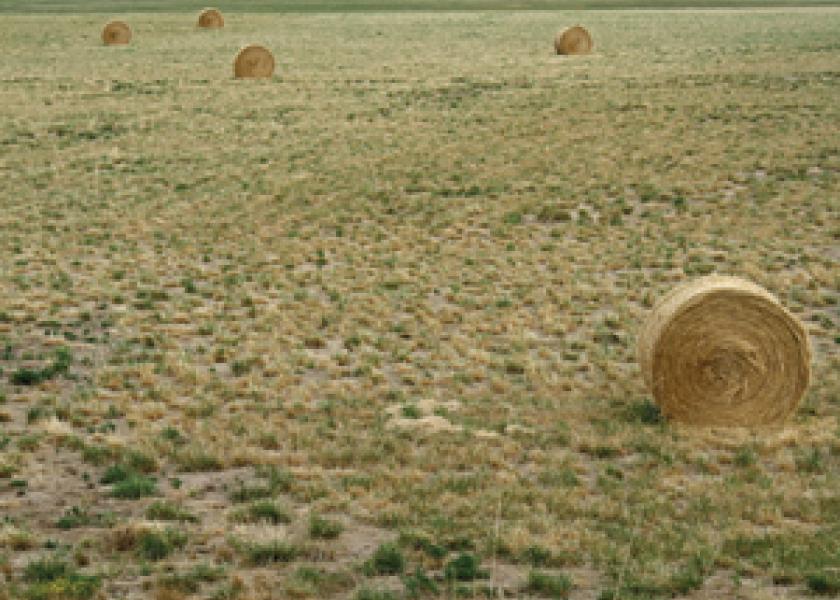Thin Pastures Creating Desperate Measures

Thin pastures and meager forage supplies prompt producers to seek alternative feed sources.
After a summer of little to no rain and scorching temperatures, pastures across the U.S. are spent. Beef producers are being forced to feed hay weeks ahead of schedule, knowing that the forage crop is equally depressed.
"This clearly is the worst forage situation we have seen since the 1933 drought," says Dan Undersander, forage specialist at the University of Wisconsin.
Drought in the Southern Plains devastated forage supplies in 2011, but the region trucked hay in from Canada and the Northern Plains states. "Last year, we had hundreds of trucks running hay from the north to the south," says Steve Hessman, hay market analyst with USDA and the Kansas Department of Agriculture. This year, the Dakotas won’t have much, if any, extra supplies.
"Kansas is short of alfalfa and bluestem hay," Hessman reports. He estimates that alfalfa production is 50% of normal and bluestem between 40% and 50% below normal.
Some cattle producers are turning to the corn and even soybean crops, hoping to salvage them as livestock feed.
To compound the problem, aflatoxin is showing up in some dryland corn that could be used for feed, and nitrate levels are expected to be high. If corn will be grazed or green-chopped, test for nitrate levels before harvest. If corn will be chopped for silage, test it after the ensiling process is finished, at least three to four weeks after ensiling.
Corn silage that is high in nitrates can still be fed, Undersander says, but it has to be diluted with grain or another forage source—all of which will be scarce this year. A dilution rate of two-thirds low-nitrate feed mixed with one-third higher-nitrate feed is common.
Swathers are running in soybean fields in Kansas, Hessman notes. "Typically, soybean hay is ground and blended with alfalfa before being fed to feeder cattle," he says.
The situation is desperate enough that Kansas farmers are considering planting oats in September to see if they can get to a point where they can be baled. "As far as I know, it’s never been done," Hessman says.
"Small grain seed is in short supply, and herbicide residues could restrict the next crop," Undersander adds. On average, he notes, small grain crops planted by Aug. 1 in southern Wisconsin and further south will yield about 1 to 3 tons of dry matter, while corn will yield 1 to 4 tons. "These are desperate measures, and the question remains whether we will even get enough rain to replant."
USDA Pasture Condition Ratings
As of mid-August, more than 80% of the pastures in 10 states were categorized as "poor" or "very poor."

As the corn and soybean harvest unfolds, there are several ways cattle producers can conserve their precious hay crop:
- Limit your cattle’s hay access to 8 to 12 hours a day, instead of 24. This process is more labor-intensive but reduces hay waste.
- Wean calves early to reduce the feeding requirement for the cow. Feeding the calf is usually less expensive than feeding the cow to feed the calf.
- Feed low-quality forages to the cows that have recently had their calves weaned. Cows have the lowest nutrient requirements when the calves are weaned and they are still in the early stages of gestation.
- Segregate your herd into various classes based on nutritional requirements (yearlings, cows with calves, dry cows, bulls). Then you can be sure each group receives the right grain-to-hay ratio and only the amount of feed needed.
- Measure the cost of feed on an energy basis to determine which feed options are the best value. This information can help you set up a hay budget for the rest of the year.







